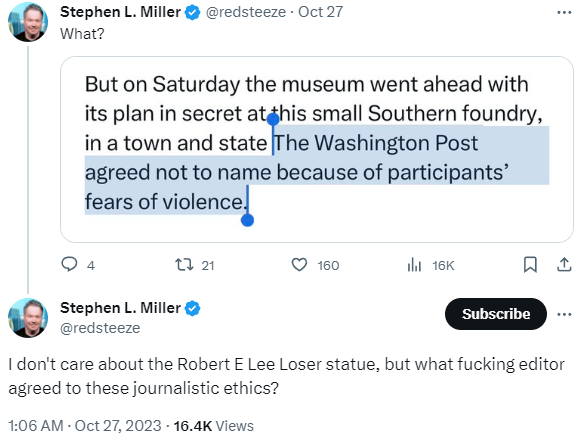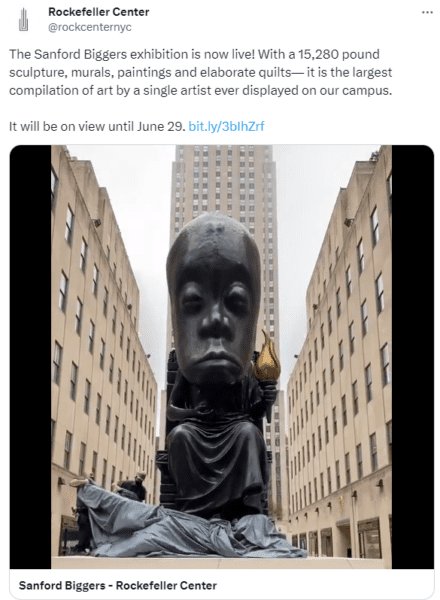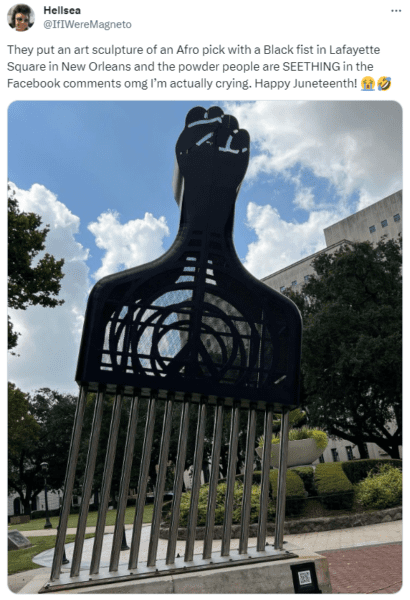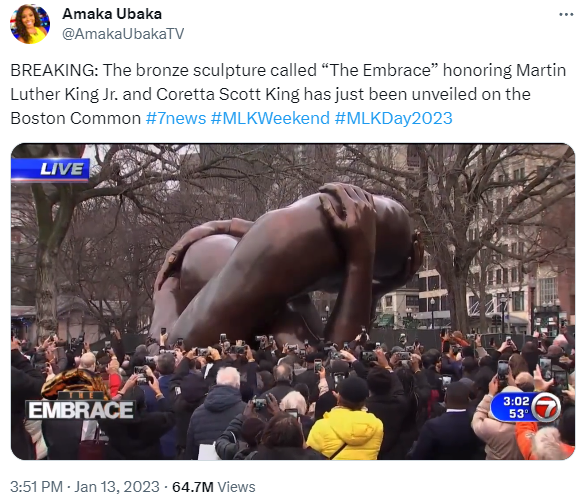There Must Be a Cost for Anti-White Hate
Gregory Hood, American Renaissance, October 30, 2023
Subscribe to future audio versions of AmRen articles here.
The Robert E. Lee statue from Charlottesville, Virginia, has been cut up and melted. State media NPR called it a “different journey” for the statue. The Smithsonian seemed delighted, calling the statue “divisive.” Melting it is presumably unifying.
We are told that the foundry owner presiding over the vandalism was a black man proud to “destroy hate.” The New York Times noted that as the general’s face was cut off and fell to the floor, an observer said, “It feels like a public execution.”
The Washington Post gloated, conspiring to show photos and videos of the destruction but hiding the identity of those who did it. Journalists can keep a secret if they agree with the political objective. Conservative journalist Stephen Miller, though taking care to scorn the “loser” statue, thought this was outrageous.

Conservative quibbles aside, America has plenty of statues to “losers,” including various Indian tribes. Indeed, America has recently been taking down statues to winners, such as the man who captured California during the Mexican War, because it makes “losers” like Mexicans feel angry. Who cares about the feelings of white Southerners?
The ”public execution” was presided over by Andrea Douglas, executive director of the African American Heritage Center. The vandalism capture’s her people’s general contribution to American and world culture.
The destruction is part of “Swords Into Ploughshares,” an “inclusive” art organization. The group is supported by George Soros’s Open Society Foundations, and leftist groups including the local chapter of the Democratic Socialists of America supported the Lee project.
Lee Park, where the statue stood and now renamed Market Street Park, was a homeless encampment for most of the last month, because the mayor of Charlottesville decided it would be uncaring to enforce a curfew against the “unhoused.” On October 21, it uncaringly reimposed the curfew. The city was far less queasy about allowing violence against protesters who had a permit for the Unite the Right rally in 2017.
We can only imagine what “inclusive” art is coming next, but we can’t expect much.



This is the best they can do. (Just look at what passes for “genius” today.) The true “art” was the destruction. Whatever mediocrity follows will be forgotten the day it is unveiled.
The burning head of Lee was inadvertently striking. It is already the avatar for many handles on X, and I expect derivatives will be used by many Southern, American, and white nationalists.
Charlottesville’s Robert E. Lee statue has met its end, in a 2,250-degree furnace.
The divisive Confederate monument, the focus of the deadly “Unite the Right” rally in 2017, was secretly melted down and will become a new piece of public art.
More on the process:… pic.twitter.com/XatZUfvku3
— The Washington Post (@washingtonpost) October 26, 2023
This burning head will be better than whatever affirmative-action art project they can slap together. Yet, the fact is, the largest explicitly pro-white march in recent history took place to save this statue, which was destroyed despite lawsuits. The march became an excuse for one of the largest crackdowns on free speech in American history, perhaps ending the free speech norm for good. It’s unquestionably a defeat, though possibly a necessary one.
It was necessary for two reasons. The Alt Right argument that anti-Confederate iconoclasm was a precursor to anti-American iconoclasm has been proven. Media outlets mocked President Donald Trump for suggesting that taking down General Lee was a precursor to taking down the Founding Fathers, but that’s already happening. It is not about the Confederacy or even slavery; it’s about race. We also saw that it wasn’t about moving monuments to a museum or “contextualizing” them, but destroying them. The conservatives who told us we were paranoid were wrong.
Second, Unite the Right was the catalyst for censorship, deplatforming, and government repression, though that may have come in any event. In retrospect, everyone was naïve to think the regime would play fair, obey its laws, and let white advocates compete in the mythical marketplace of ideas. Our opponents really do want to silence us, and so it’s not surprising that they violate the norms that once defined the country. One could argue that this redeems the Confederate cause, showing the inevitable tyranny of any centralized government crusade to enforce egalitarianism.
Power is what matters. Our rulers make fools of themselves to avoid hurting the feelings of non-whites: cancel college classes because of fake hate crimes; refuse to identify suspects so as not to offend blacks; abolish gifted programs because they are full of whites and Asians; decriminalize vagrancy, fare-beating, and public defecation because punishing “crimes of poverty” punishes too many non-whites. Any capitulation can be justified to avoid stereotypes, hurt feelings, and racial trauma.
As for whites? Destroy their monuments; even disturb their dead. We are supposed to take it, not least because there is no “we” acting in a unified way. Surely, the federal or state government would punish any conservative town that somehow used the legal system to destroy a monument of Martin Luther King. Just about anything can be construed as a “civil rights violation” if you are a protected group, and whites are not.
Virginia now has a Republican governor. Glenn Younkin said he felt “very strongly” that removed monuments should be in museums and not destroyed, but he did nothing to protect the Lee statue. Perhaps there is nothing he could have done legally, but he never mentioned it. Monuments are not an issue in this year’s state election.
The Republican who started the wave of Confederate iconoclasm, former South Carolina governor Nikki Haley, is surging in the GOP primary. The candidate who did defend monuments, President Donald Trump, remains in the lead, but Nikki Haley is hardly suffering because of her stance. A refusal to protect Confederate monuments has no cost to conservative politicians.
Trying to “convince” politicians is a waste of time. We must be willing to impose a cost, at least in primaries. That could prove difficult when “monuments” compete with guns or taxes, and the temptation is always to vote against Democrats. However, if white Southerners can’t get help from their representatives even in the conservative South, it’s worth debating whether there is any point in voting.
There are three small things white advocates can do. Join any local group that is dedicated to preserving monuments or start one if a local monument lacks protection. Second, build new statues and artwork through groups such as Monuments Across Dixie. Support people who are working on this issue full time, such as John Hill, the closest living descendent of legendary general A.P. Hill. Even small donations of money or time can make a big difference. The “execution” of General Lee should motivate us all to fight the cultural butchers. It’s not just a Southern issue; monuments to our heroes are under attack everywhere.
However, the problem is much larger. There can be no progress on any front until whites take their own side, or at least admit they have a side. We may not like claiming victimhood, but democracy rewards groups that organize. Perhaps we should reframe it within our own minds as rebellion — and we certainly have the symbols for it. Attempts to divorce the Lost Cause from racial politics (including the sniveling slogan “heritage, not hate”) have failed to protect even the most venerable Southern symbols. Yet the Confederate battle flag and the Rebel spirit has a new resonance nationwide as a symbol of defiance against an elite that is now openly anti-white, anti-Christian, and anti-historic America.
Robert E. Lee’s greatness partially comes from his willingness to work for Union once the war was lost and not wage a brutal guerilla campaign. Men such as Abraham Lincoln and Ulysses S. Grant honored their defeated foes because the point of the war was not to destroy them, but to keep the country together. That reconciliation is one of America’s greatest accomplishments.
Today, our opponents are not fellow Americans united by blood, heritage, or history, but foreign occupiers. It’s not surprising they are tearing up the peace agreement, because they aren’t part of the nation. Faulkner said the past isn’t over, it isn’t even past. Perhaps the Lost Cause isn’t lost at all but is reemerging in a new form. The Confederate cause of liberation from a foreign, overweening power makes even more sense than it did in 1861. How we get to liberation is a larger issue, but it must begin by embracing the spirit of rebellion. Rebellion is what this country was built on — and what our next one will be built on too.















